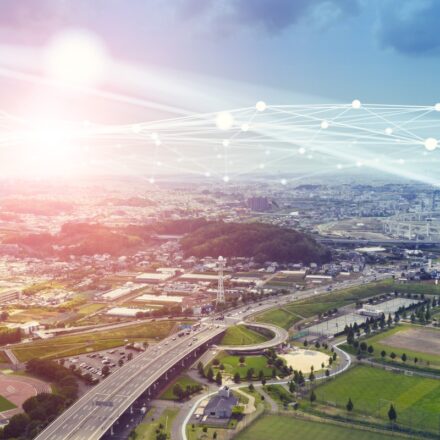We have heard the adage “data is the new oil.” Data has become one of the most critical assets to enterprises globally. Digitalization of organizations has opened up a new horizon in customer outreach, customer services and customer interactions. Every interaction with a customer is now a data footprint – with massive potential to be harnessed when viewed and analyzed in totality.
The collection and processing of data is facilitated by new technologies such as 5G mobile networks and edge computing (In an a previous blog I spoke about how edge is ushering in a business transformation – read here). The time then is ripe for enterprises to tap into the transformative effects of artificial intelligence (AI) and machine learning (ML).
Early forays into AI were inhibited by a lack of computing and processing power, but today that barrier has largely been lifted due to progress in both IT infrastructure and software spaces. Artificial intelligence has also evolved greatly as myriad industries recognize its ability to help businesses stay relevant, improve operations, gain competitive advantage and pursue new business directions. The AI space is growing exponentially. Gartner has predicted that the business value of AI will reach $5.1 billion by 2025.
Smarter manufacturing
For the digitally connected consumer, examples of AI are commonplace. Commonly used applications with AI at their core include Apple’s Siri, Amazon’s Alexa and navigation applications such as Waze and Google Maps that recommend best routes to take based on current traffic conditions.
What’s perhaps lesser known is how AI and ML have been applied to great transformative effect in a variety of use-cases today. With the vast number of data endpoints today, the convergence of AI and the internet of things (IoT), which is about sensors installed in machines that stream information to be processed and analyzed, has been greatly beneficial to industries.
AI plays an instrumental role in the manufacturing industry, assisting in matters ranging from demand forecasting to quality assurance to predictive maintenance and, of course, cost savings. A McKinsey report revealed 64% of respondents in the manufacturing sector who adopted some form of AI enjoyed cost savings of at least 10%, with 37% of respondents reporting cost savings of more than 20%.
A large global food manufacturer used machine learning to improve planning coordination across its marketing, sales, account management and supply chain, which resulted in a 20% reduction in forecast errors, a 30% reduction in lost sales, a 30% reduction in product obsolescence and a 50% reduction in demand planners’ workload.
A premier automobile manufacturer, meanwhile, used automated image recognition, which uses AI to evaluate component images during production and compares them in milliseconds to hundreds of other images of the same sequence to determine deviations from the standard in real-time. The AI application also checks whether all required parts have been mounted and if they have been mounted in the right place. It’s also deployed in other parts of the manufacturing process, such as dust particle analysis at its paint shop, where vehicle surfaces are painted and dust particle content on the surfaces needs to be eradicated. There, AI algorithms compare real-time data from dust particle sensors in the path booths and dryers with a comprehensive database that was developed for dust particle analysis. The result – highly sensitive manufacturing systems benefited from even greater precision during the production process.
Healthcare and digital cities
Over in Japan, Konica Minolta, an imaging technology firm, embedded AI and ML into its Dynamic Digital Radiography (DDR) healthcare solution. Backed by IT infrastructure from Dell Technologies capable of processing up to 300 images in a single scan and animating those images in mere minutes, DDR enabled medical practitioners to make better predictions concerning lung ventilation and perfusion (oxygen and blood flow) in X rays, so a patient’s treatment plan could be more easily determined.
Governments’ focus on smart cities too, has given AI an opportunity to shine in many ways. From a citizen security standpoint, AI-backed security camera footage can be analyzed in real time to detect criminal behavior so it can be instantly reported and dealt with. Automatic number-plate recognition (ANPR), a technology that uses optical character recognition on images to read vehicle registration plates from camera footage, can be used to great effect for traffic management and to predict traffic for planning purposes. AI is also used to assist with predictive maintenance for public infrastructure, pollution control and waste management (where AI powered robots can sort through rubbish and clean lakes and rivers).
AI for the future
The future for artificial intelligence and machine learning will be unbelievably exciting. The potential is immense, and we have just scratched the tip of the iceberg. As Gartner puts it, there are four trends driving the AI industry – responsible AI, small and wide data, operationalization of AI platforms and efficient use of resources.
As we have seen with some of the customers quoted above, Dell Technologies continues to invest and work in this space, collaborating with our customers and our partners to fully harness the power of these evolving technologies. In times to come, we will see more analytics driven transformative business outcomes. Fasten your seat belts – this is taking off.


